Planting And Growing Onions With Horticulturists: ‘You Can Sow Seeds Or Purchase Sets’

VEGETABLES > ONIONS

Elizabeth is a Permaculture Garden Designer, Sustainability Consultant and Professional Writer, working as an advocate for positive change. She graduated from the University of St. Andrews with an MA in English and Philosophy and obtained a Diploma in Applied Permaculture Design from the Permaculture Association.
Reviewed By DAN ORI

Dan has over 27 years’ under his belt caring for plants and gardens. Working as a Horticultural Instructor and Consultant, he draws on a diverse range of experience that includes working as a Head Gardener, Tree Surgeon, Garden Centre Trouble Shooter, and writer of academic papers. Dan has a Level 3 Diploma in Horticulture and is currently a candidate for the RHS’s most prestigious award – The Master of Horticulture.
Contributions From EMILY CUPIT

Emily is a Gardening Writer, Photographer and Videographer from Derbyshire, UK. She is the Founder of Emily's Green Diary - a community of more than 75,000 people who share in her gardening journey.
IN THIS GUIDE
ONION GUIDES
Onions are an extremely useful addition to your home-grown diet, and can be useful as companion plants for other crops too.
Onions are of course highly prized for their flavour.
When in growth, their strong pungent aroma is said to deter or confuse a range of pests.
Onions are not hugely difficult to grow, especially if you plant sets (young bulbs) rather than growing from seed – but there are some things you need to bear in mind in order to get the best possible yields.
In this guide, we’ll tell you more about these plants, and the varieties that you might consider.
We’ll cover the basic environmental and care requirements and help you understand how to grow onions from start to finish.
Overview
| Botanical Name | Allium cepa |
| Common Name(s) | Onions |
| Plant Type | Biennial, Vegetable, Bulb |
| Native Area | Cultivated |
| Hardiness Rating | H2 / H3 |
| Foliage | Thin, upright leaves |
| Flowers | Globes of white flowers |
| When To Sow | February |
| When To Plant | March, April / September, October |
| Harvesting Months | June, July, August, September |
Sunlight
Preferred
Full sun
Exposure
Sheltered or exposed
Size
Height
0.1 – 0.5M
Spread
0.1 – 0.5M
Soil
Preferred
Rich loam
Moisture
Moist but free draining
pH
Neutral to slightly acidic
People have been cultivating onions for over 5,000 years.1Onion History. (2019, December 1). National Onion Association. Retrieved March 21, 2023, from https://www.onions-usa.org/all-about-onions/history-of-onions/
It is a biennial plant, related to wild species which occur in the wild in Asia, but in gardens and on farms, it is more typically grown as an annual crop.
A number of different onions, or plants in the Allium family are commonly grown in gardens.
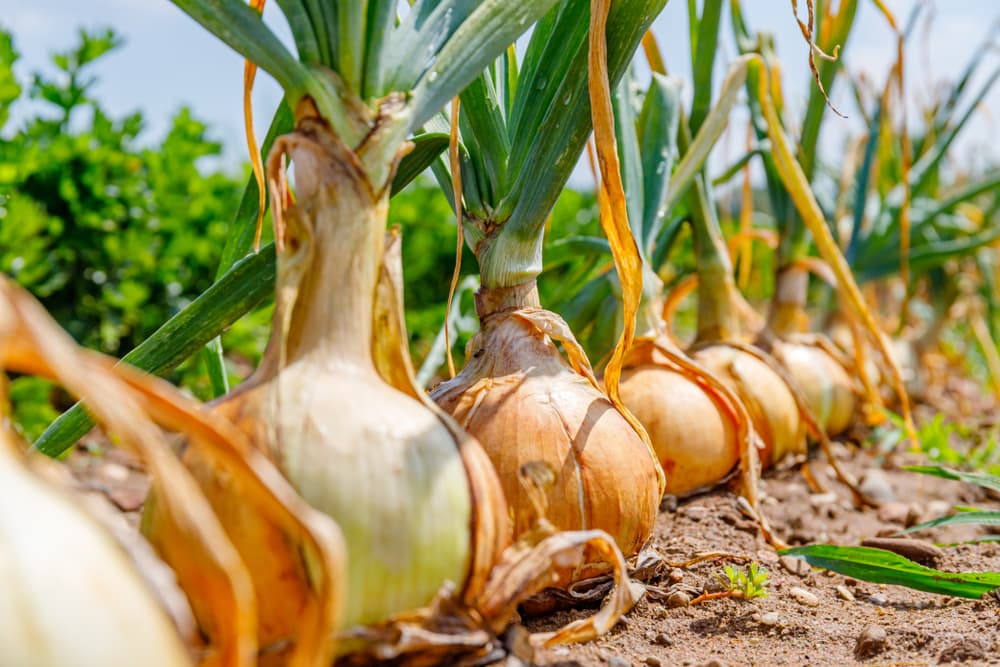
In this article, we are referring specifically to the bulb onion, or common onion: Allium cepa var. cepa.
This is related to but has different care requirements from perennial onion types, and other close relatives commonly cultivated in annual gardens including garlic, leeks etc.
The shallot is another related plant, which has been classified as the same species (var. aggregatum) since 2010.2Allium ascalonicum. (2023). United States Department of Agriculture. Retrieved March 21, 2023, from https://npgsweb.ars-grin.gov/gringlobal/taxon/taxonomydetail?id=2221
Common Varieties
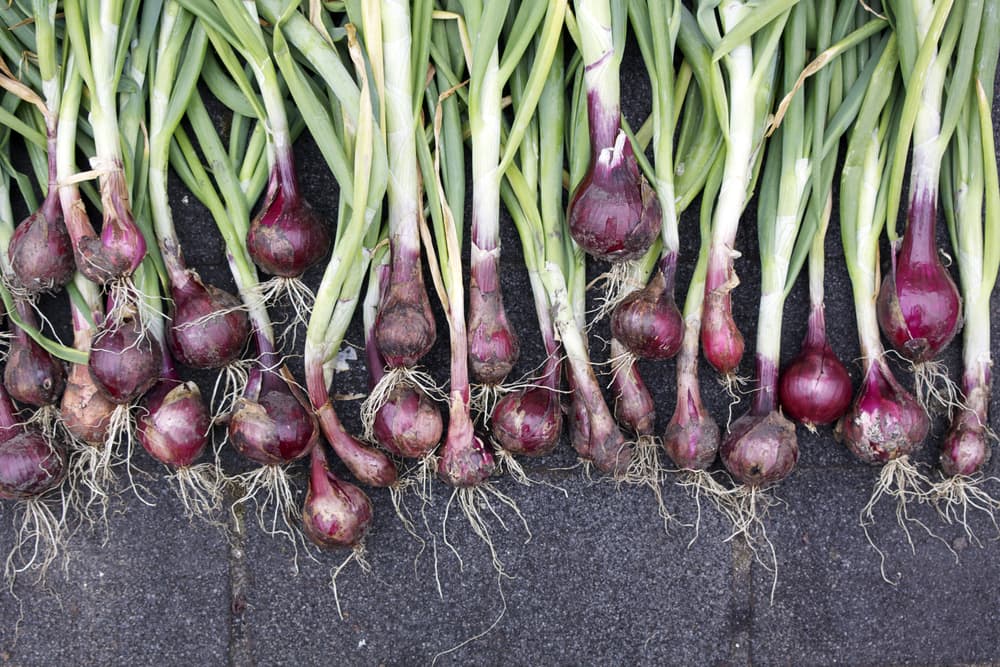
Onion varieties which have been awarded with the RHS Award of Garden Merit (making them particularly suited to growing in the UK) include:
- ‘Autumn Gold’
- ‘Centurion’
- ‘Fasto’
- ‘Hercules’
- ‘Hybound’
- ‘Hylander’
- ‘Jetset’
- ‘Red Baron’
- ‘Red Fen’
- ‘Redspark’
- ‘Rumba’
- ‘Setton’
- ‘Sturon’
- ‘Stuttgarter’
- ‘Zebrune’
When choosing onion varieties, it is important to think about whether you would like to grow onions from seed, or purchase sets or young onions to plant (which is the easier option).
It is also important to consider how you wish to use the onions (and whether you need them to store well).
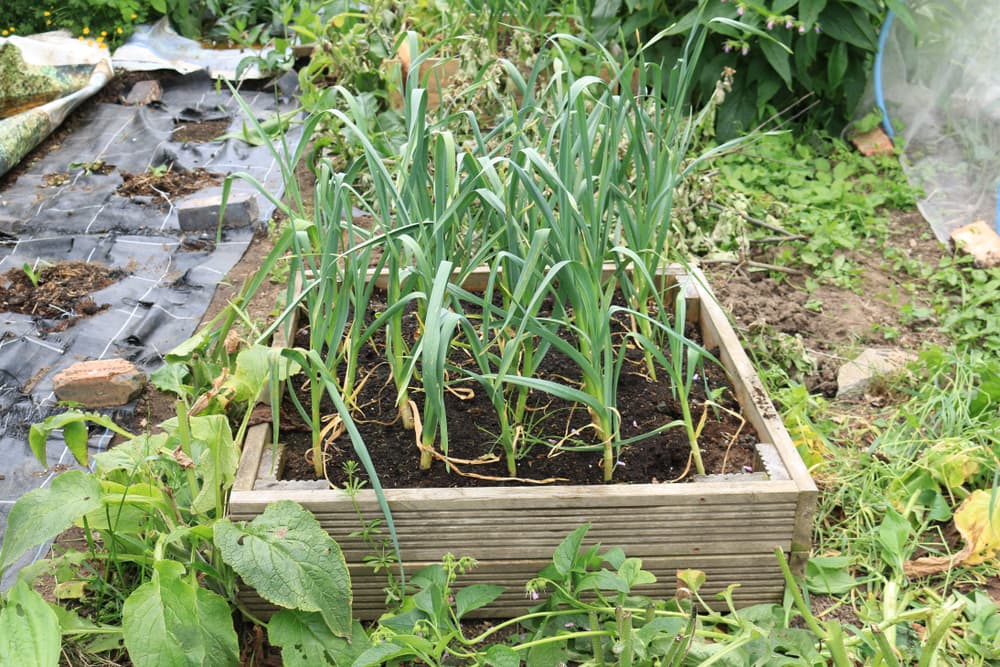
You also need to think about when you are sowing – some varieties are better for spring planting, and some for overwintering.
Growing Onions
As mentioned above, you can sow onion seeds, or you can purchase sets and plant these.
Deciding which of these options you will take is one of the first things you need to decide when growing onions at home.
Sowing Indoors
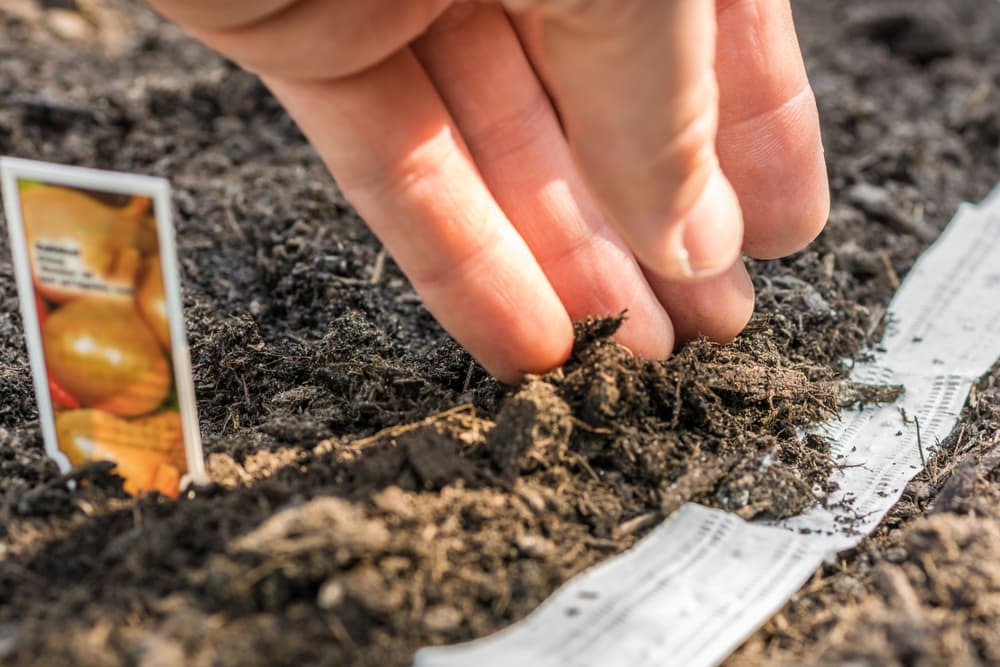
If you decide to opt for the more challenging (but cheaper) option of sowing seeds, the seeds can be sown indoors or outside.
When sowing indoors, you will sow the seeds in mid to late winter.
Sowing Outdoors
You can also direct sow onions where they are to grow from late winter until mid-spring, as soon as the soil is becoming less damp and is starting to warm.
“Often, keen gardeners will sow too early in spring and get hit by a cold spell which can make plants bolt,” explains Master Horticulturist Dan Ori.
“Bolting is what we call the reaction of the plant when due to a stress factor the plant sends up a flower stalk.
“The flowering of an onion affects the quality and storage qualities of the onion bulb, as the plant will put most of its energy into producing seeds rather than developing the bulb.
“You can get bolt-resistant varieties like ‘Centurion’ that I would recommend.”
See our detailed guide to sowing onions for more information.
Planting
Onions sown from seed, or onion sets, are planted out in March or April.
Certain varieties can also be planted in October or November and overwintered for an earlier crop the following year.
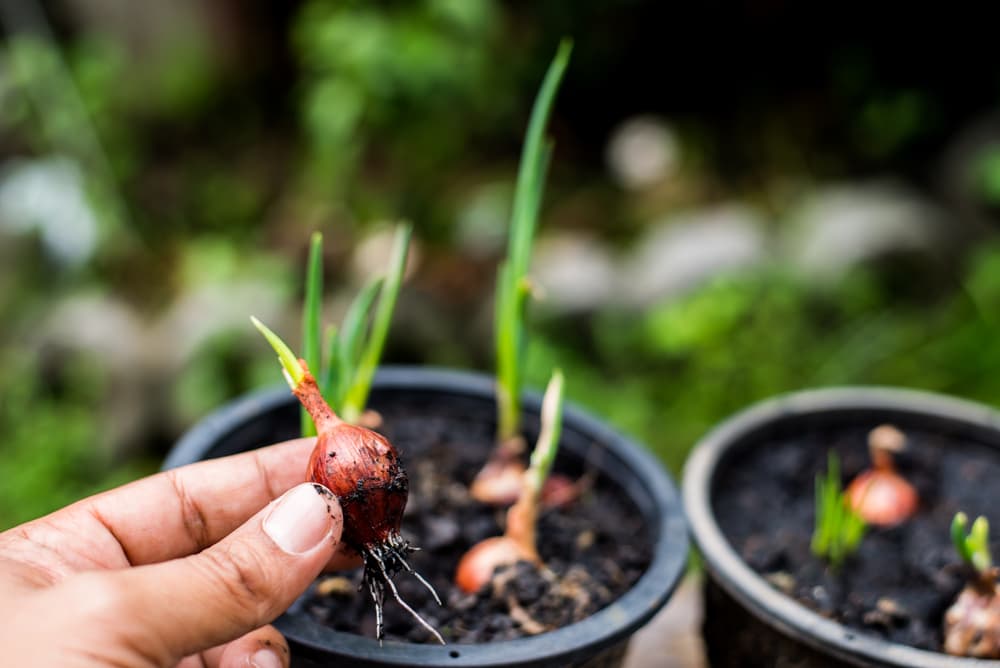
Overwintering onions is an option for those who do not have heavy clay soil or a location prone to winter waterlogging.
Onion sets can rot when placed in overly wet conditions.
However, providing the medium is free draining (or you grow undercover) overwintering onions can be a great idea.
Preparing Your Planting Site
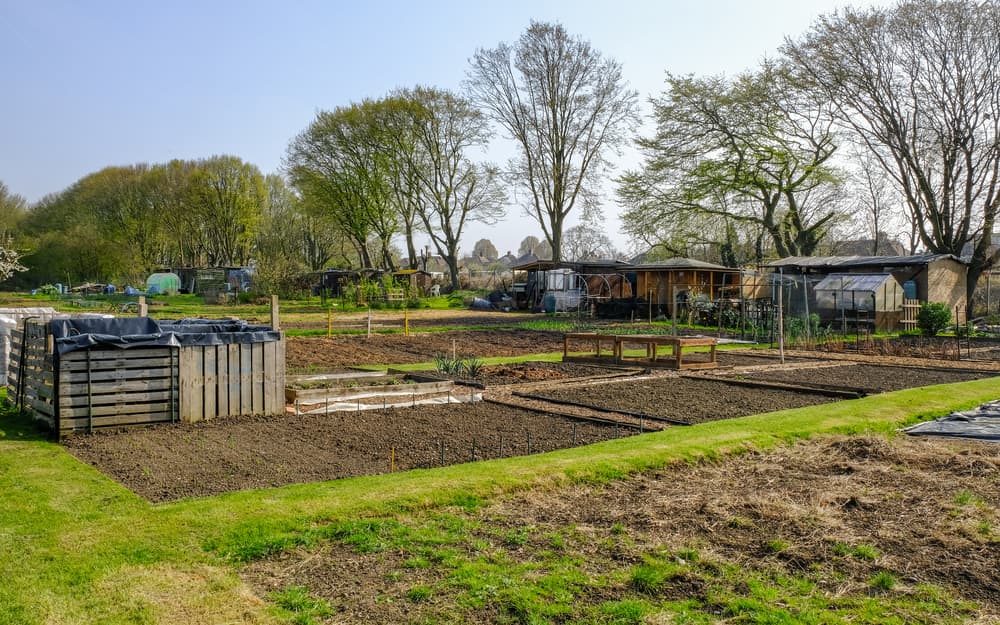
Onions have fairly limited root systems, which means that it is important to make sure that the area where you are planting them has the nutrients they need, and that the soil is healthy.
Using no dig methods to enrich the growing area or create it in the first place, is a great idea.
A ‘lasagna garden’ or other no-dig raised bed can be the ideal environment for growing onions, just as it can be great for other crops.
Make sure that there is plenty of compost, well-rotted manure or other organic matter in the garden area.
Hardening Off Seedlings
Harden off indoors seedlings before transplanting into the ground in spring – or potting up into containers if you are continuing with indoors growing.
Hardening off seedlings simply means gradually increasing exposure so they are gradually acclimatised to outdoors conditions.
How To Plant Onion Sets

Planting out onion sets simply involves choosing a suitable site, then placing the sets pointy end upwards in the ground (or the container).
Especially when overwintering, but also in spring, it is a good idea to mulch well around the plants.
A mulch including potassium-rich leaves of dynamic accumulator plants like comfrey, for example, can help onions grow well.
A mulch spread over the surface of the bed or growing area can also lightly cover the sets or young onion plants and stop birds from plucking them from the ground.
Spacing
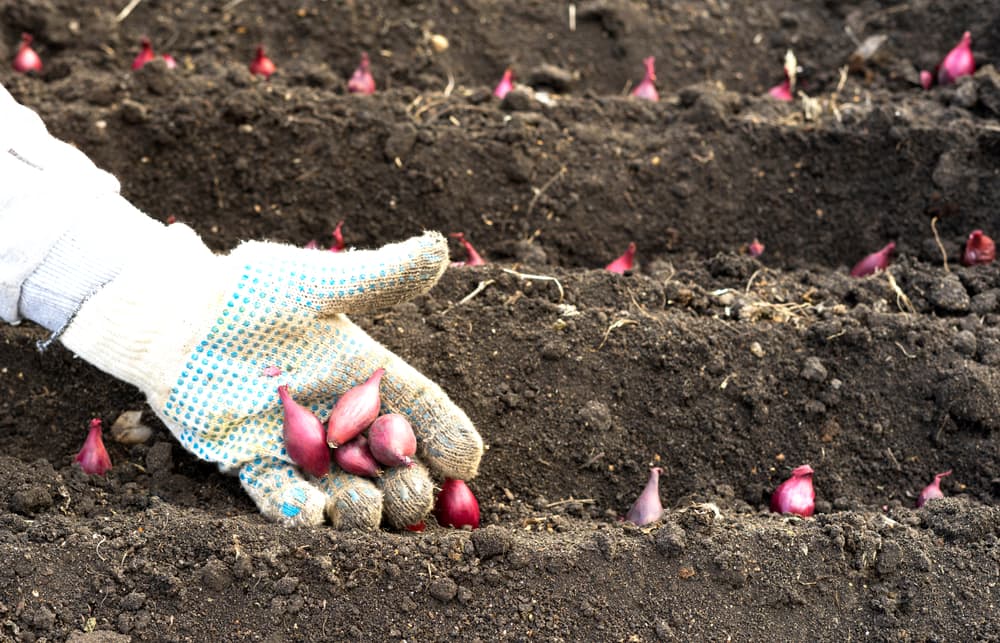
If direct sowing, the seeds should be sown around 1cm deep, in rows 20cm apart, thinning to 10cm between plants, or around 9 per square foot.
Spacing is approximate and you can alter it, depending on how large you would like the bulbs to become and the varieties you are growing.
As a rough rule of thumb, onion sets should usually be placed around 10-15cm apart or, again, around 9 per square foot.
Depth
When planting onion sets, the pointy tips should just show above the surface of the soil or growing medium.
Plant Care Guidelines
Onions should ideally be grown in full sun for best results.
Watering
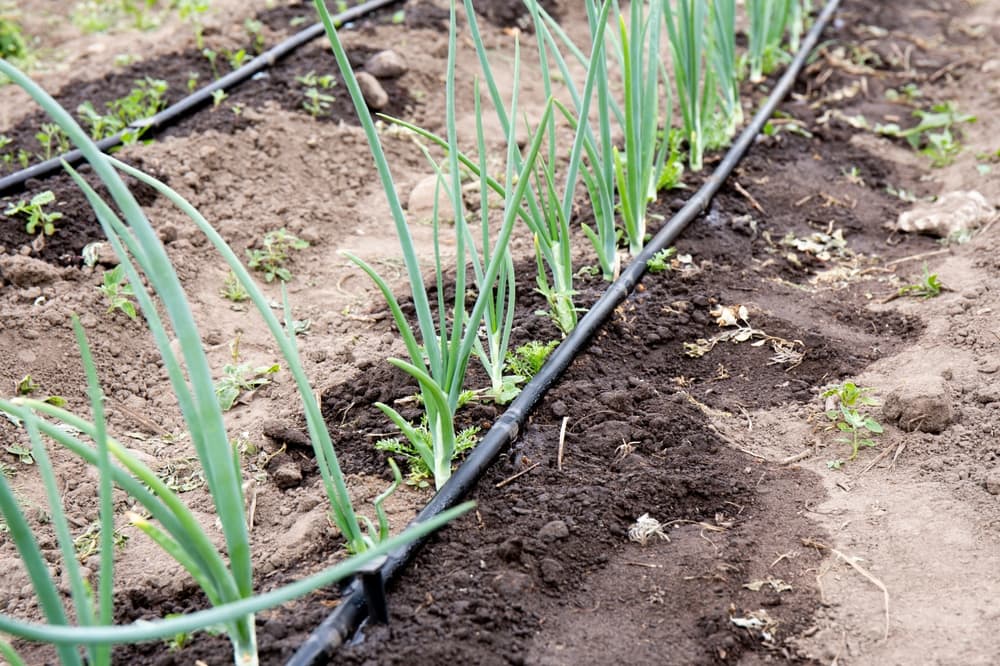
Water onions every two weeks or so during prolonged dry spells – more frequently if the onions are growing somewhere where they are not getting natural rainfall, or when growing them in containers which will dry out more quickly.
Whenever watering, try to water at the soil level, not from overhead, since overhead watering can increase the incidence of fungal infections.
Once the onion bulbs have expanded and swelled, by around mid-summer for spring sown crops, stop all watering.
If you continue to water past mid-summer, the onions will not store as well.
Feeding
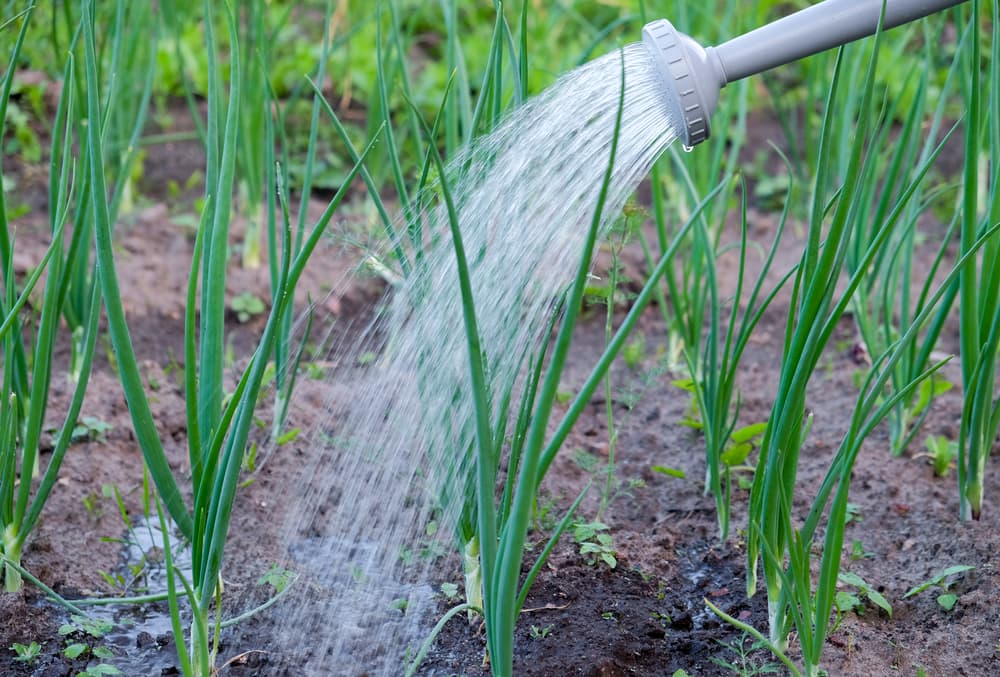
Nutrition will largely be provided by the soil or growing medium, which should, as mentioned above, be mulched with compost or other organic matter upon planting.
Adding a potassium-rich mulch or fertiliser in around June can help encourage healthy bulb formation.
Autumn planted onions will also benefit from top dressing with a nitrogen-rich mulch or organic fertiliser like dried poultry manure in late winter.
Weeding
Onions are one crop that does not cope very well with competition.
Unfortunately, since onions don’t give good ground cover or produce much shade, weeds can easily spring up between them.
It is important to keep on top of weeds.
A mulch will help to keep down the weeds, but you are likely to still have to do some weeding.
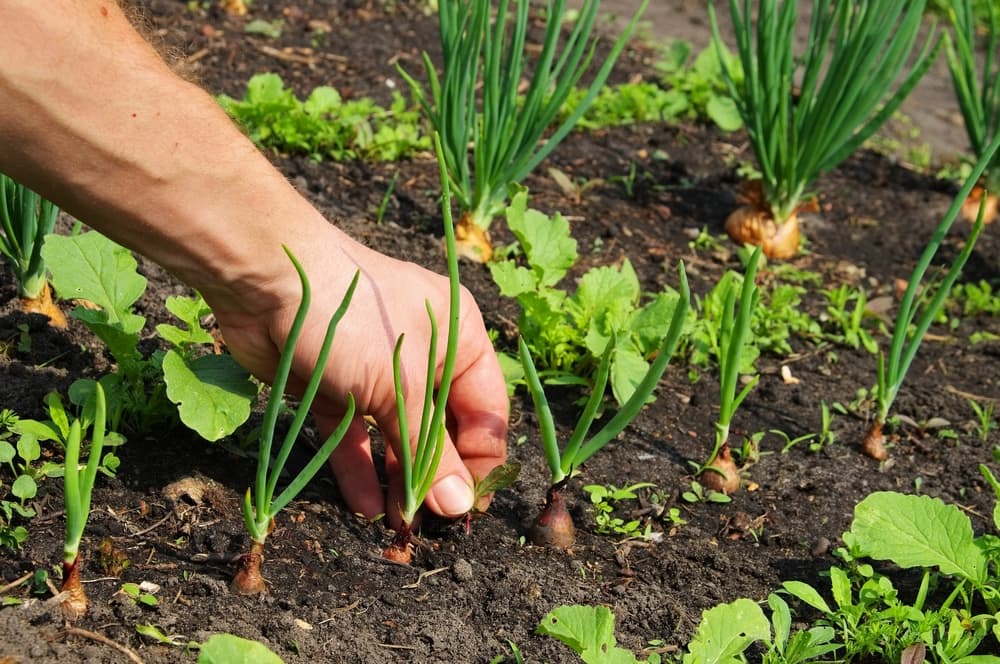
Since onions have shallow roots, these can easily be damaged by careless hoeing.
Weeding by hand, little and often, or careful use of a hoe, can help you keep on top of things.
Lift and drop annual weeds on the surface of the soil, or consider collecting more pernicious weeds and using these to make a liquid fertiliser for your garden.
Common Problems
Onion Fly
Onion fly is one of the best-known pests of an onion crop.
Unfortunately, the first sign will be drooping yellow foliage (before you would expect to see this as harvest approaches).
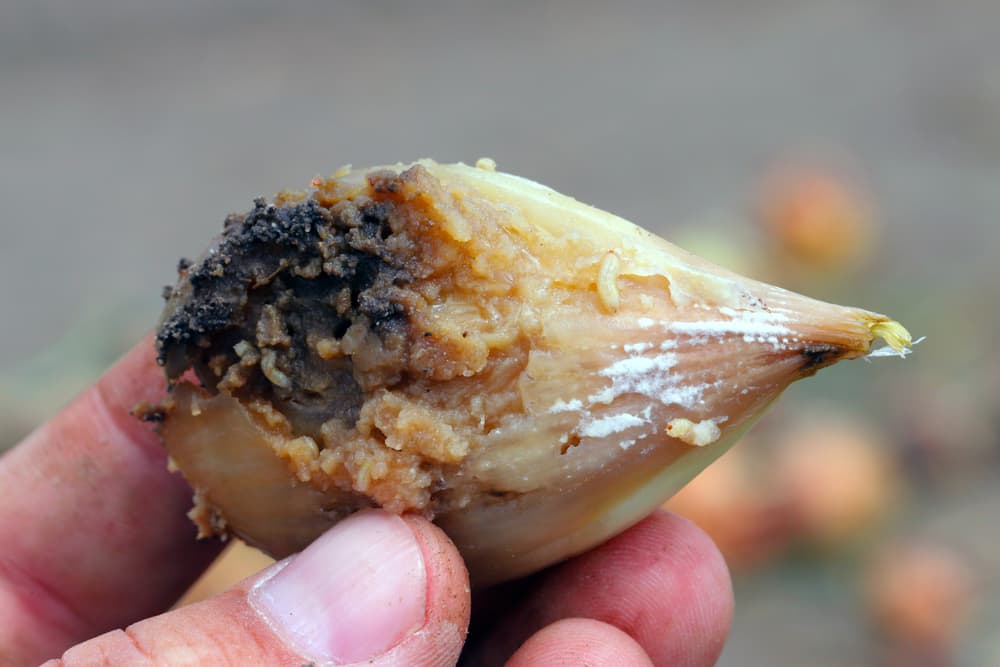
But by this time, the larvae will already be nibbling away, destroying the bulb.
Plant carrots and parsley in rows between onions, or in among them, to reduce the incidence of this problem.
These plants can somewhat mask the scent of the onions and so make it less likely that onion flies will find them.
Onion Neck Rot
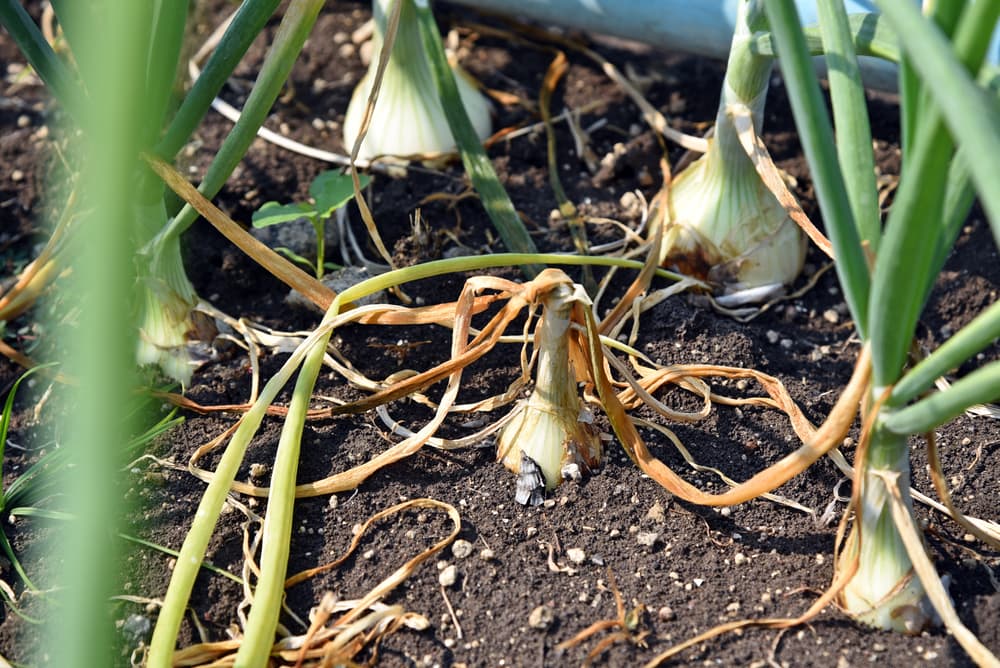
Onion neck rot can be a problem during wet summers, especially in locations with heavier and less free-draining soils.
You’ll see brown markings and a fluffy grey mould may appear.
Avoiding overcrowding and improving drainage may reduce the incidence of this problem, and bulbs should be dried thoroughly so this problem does not occur in storage.
References
- 1Onion History. (2019, December 1). National Onion Association. Retrieved March 21, 2023, from https://www.onions-usa.org/all-about-onions/history-of-onions/
- 2Allium ascalonicum. (2023). United States Department of Agriculture. Retrieved March 21, 2023, from https://npgsweb.ars-grin.gov/gringlobal/taxon/taxonomydetail?id=2221
